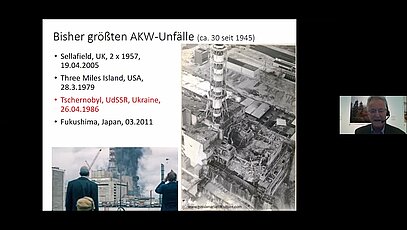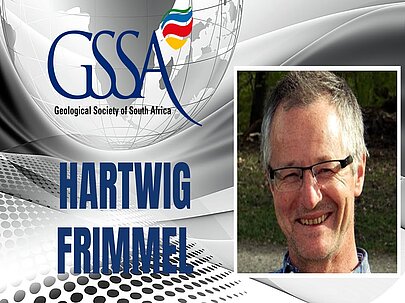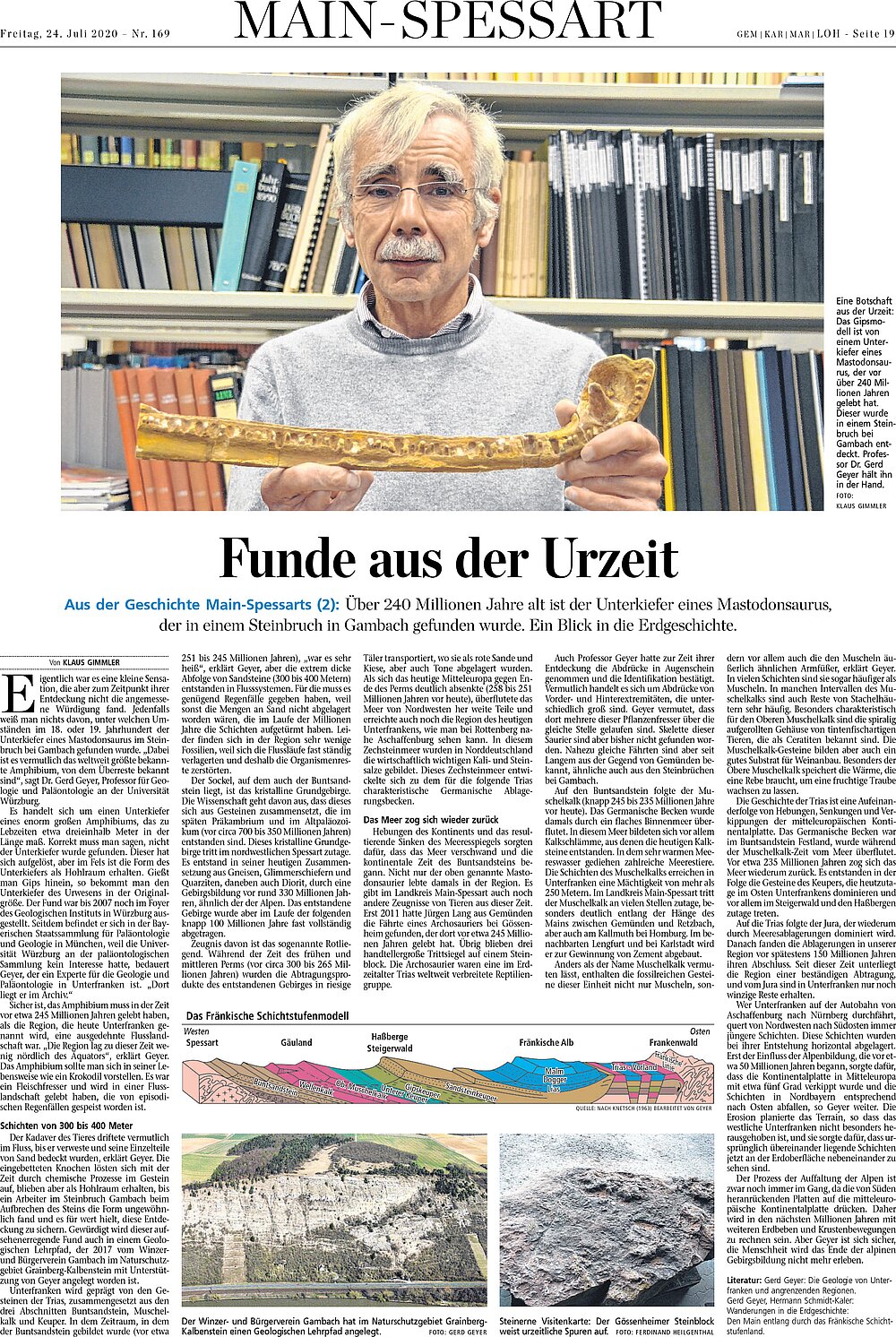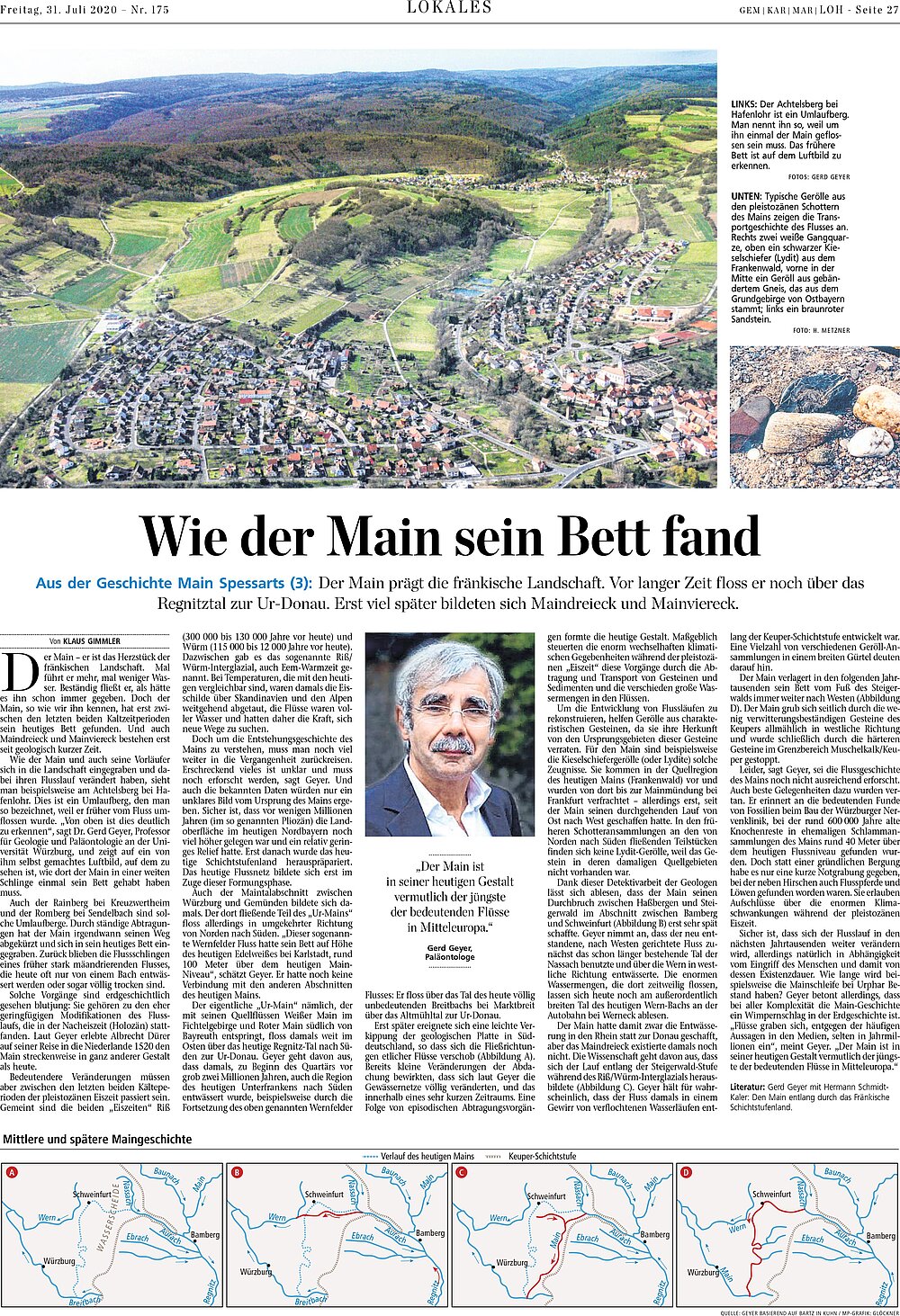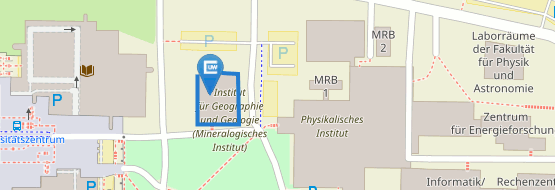Services & Public Relations
The expertise of the department is also available to a limited extent to organisations and individuals outside the University of Würzburg. Examples are:
- occasional advice to policy makers, be it at Bavarian, federal or EU level,
- analysis of geomaterials (e.g. mineral identification, clay mineral analysis, analysis of kidney stones),
- active participation in international professional associations (SGA, SEG, Internat. Commission for Stratigraphy)
- the department is a founding member of the Bavarian Competence Centre for Geogenic Resources (BKGR).
Talk by Prof. Hartwig Frimmel
on May 14, 2024 at the Museum Wiesbaden: „Die Big Five unter den Minerallagerstätten im südlichen Afrika“ (The Big Five mineral deposits in southern Africa)
Award 2022
Prof. Hartwig Frimmel was selected on the basis of widely recognized expertise in a field of economic geology as Thayer Lindsley Visiting Lecturer in 2022 by the Society of Economic Geologists (SEG).
The Museum im Kulturspeicher Würzburg is showing a special exhibition "Tree and Soil", which deals with the consequences of the Fukushima reactor disaster. On 29 April 2021, a lecture evening with a discussion panel was organised for this purpose, at which Prof. Hartwig Frimmel spoke on the topic of final disposal from a Lower Franconian perspective. At the latest since the amendment of the Site Selection Act in May 2017, German politicians have been under pressure to find a final repository for approximately 27,000 m3 of highly radioactive waste. The company commissioned with the site search presented a first interim report, according to which a large part of Lower Franconia is identified as potentially suitable. In the lecture, the essential criteria for a suitable site are explained and critically examined from the Lower Franconian point of view. Following this, photographer Johannes Kiefer will present a documentation of the Konrad shaft in Salzgitter, which is currently being developed for the final storage of low to medium-level radioactive waste.
As part of a series of lectures on South Africa's geological heritage organised by the Geological Society of South Africa, Prof. Hartwig Frimmel spoke on the topic of the formation of the world's largest gold concentration in Archaean conglomerates of the Witwatersrand Basin. He showed how the development of the early, essentially oxygen-free atmosphere around 3 billion years ago, climate changes at that time and the appearance of the first photosynthesis-driving microbes in temporal and local interaction led to the binding of huge amounts of gold in river sediments and coastal regions.
Mineralogical Museum
The Mineralogical Museum looks back on more than 200 years of collection history and represents one of the two important university-owned collections. Records from the years 1791 to 1793 document the first acquisition of minerals by the University of Würzburg. The collection was enormously enriched in 1803 when BonavitaBlank left his mineral collection to the university in return for a life annuity. The ever-changing collection experienced a turbulent history, summarised in a perpetual calendar published by the chair in 2008. After several changes of location due to post-war hardships and the relocation of the former Mineralogical Institute to the Hubland campus, the collection of more than 10,000 objects is now an integral part of the department and, as in the past, fulfils a variety of important functions for the university:
- Collection archive: An important task of the museum is to preserve, expand and document the existing collection so that it can be used for teaching, research and exhibitions.
- Teaching facility for students: The museum offers high-quality visual material for students, which is regularly used especially in the introductory lectures and exercises linked to them.
- Training and further education centre for teachers: Together with the Chair of Didactics, the museum regularly offers further education events and excursions for teachers as well as seminars for student teachers.
- Research facility for scientists: Active collecting work repeatedly leads to discoveries of rare material that can be identified and characterised by the facilities of the department. Scientific projects are vividly presented in special exhibitions and contribute to the expansion and attractiveness of the museum.
- Extracurricular place of learning: The Mineralogical Museum offers guided tours on various topics for all school types and ages. The museum's educational offer is not only accepted by schools from Würzburg, but from all over Lower Franconia.
On a total area of about 500 m2 , about a quarter of the collection is exhibited, whereby a distinction is made between permanent exhibitions and special exhibitions. After the themes of the permanent exhibition had remained unchanged for a long time, the museum experienced a significant improvement in 2014 with the opening of a new permanent exhibition "Collection Peter C. Ruppert: Historical Ore Deposits and Mineral Sites of the Harz Mountains" in 2014. In 2016 and 2017, this part of the exhibition was further developed with some remarkable new acquisitions thanks to the active commitment of Mr Ruppert.
Opening hours: The Mineralogical Museum is open with free admission on Sundays and Wednesdays from 2 to 5 pm. Guided tours for school classes and other groups also take place outside opening hours by appointment. You can find more information about the museum > here <
Bavarian Competence Centre for Geogenic Resources (BKGR)
In view of a steadily growing world population and increasing material needs, especially in emerging countries, a significantly increased demand for geogenic raw materials is foreseeable for the coming decades. Even with ideal optimisation of resource efficiency and recycling rates, modern society will remain increasingly dependent on the mining of energy and mineral raw materials for the foreseeable future. Questions of availability and potential conflicts of use will increasingly come to the forefront of public interest. This is especially true for Bavaria, where business and industry are particularly dependent on the supply of geogenic raw materials.
In order to take into account the growing interest in the mining of non-renewable raw materials and the increased demand in the future, the competences in the field of geological raw materials research and economic geology available at the four major universities throughout the state have been bundled in the Bavarian Competence Centre for Geogenic Resources (BKGR). The university working groups of the BKGR, namely
- Friedrich-Alexander-Universität Erlangen-Nürnberg,
- Julius-Maximilians Universität Würzburg,
- Ludwig-Maximilians Universität München
- und der Technischen Universität München
not only carry out basic university research, but also offer a wide range of services for the domestic and international economy.
Services
- Independent consulting and/or monitoring of mineral raw material projects (primarily metallic raw materials, industrial minerals as well as stones and earths, if necessary also on site, nationally and internationally)
- Studies on the availability of mineral raw materials
- Contract research
Analytics (examples)
- Rock and mineral determination (reflected-light microscopy, X-ray diffraction, Raman spectroscopy)
- Litho-geochemical analysis of major and trace elements (X-ray fluorescence analysis, LA-ICPMS)
- Mineral-chemical analyses for the determination of the chemical composition of and element distribution in solid phases (electron microprobe, LA-ICPMS)
- Isotope chemical analyses (mass spectrometry)
- Analysis of fluid inclusions in minerals (microthermometry, Raman spectroscopy)
Good national and international networking also allow access to other laboratories for solving specific problems.



